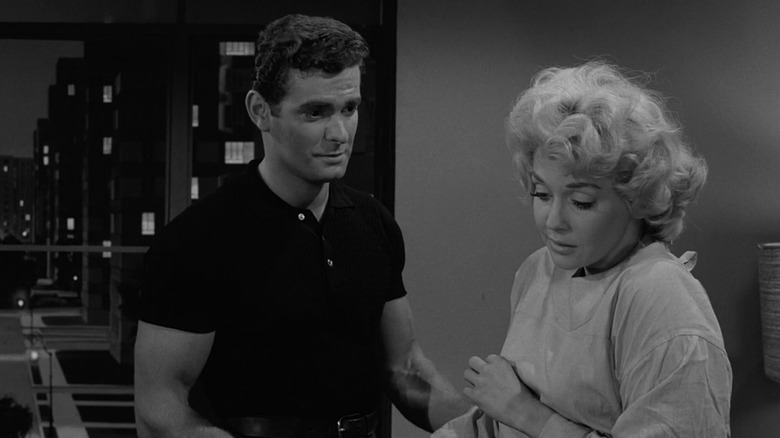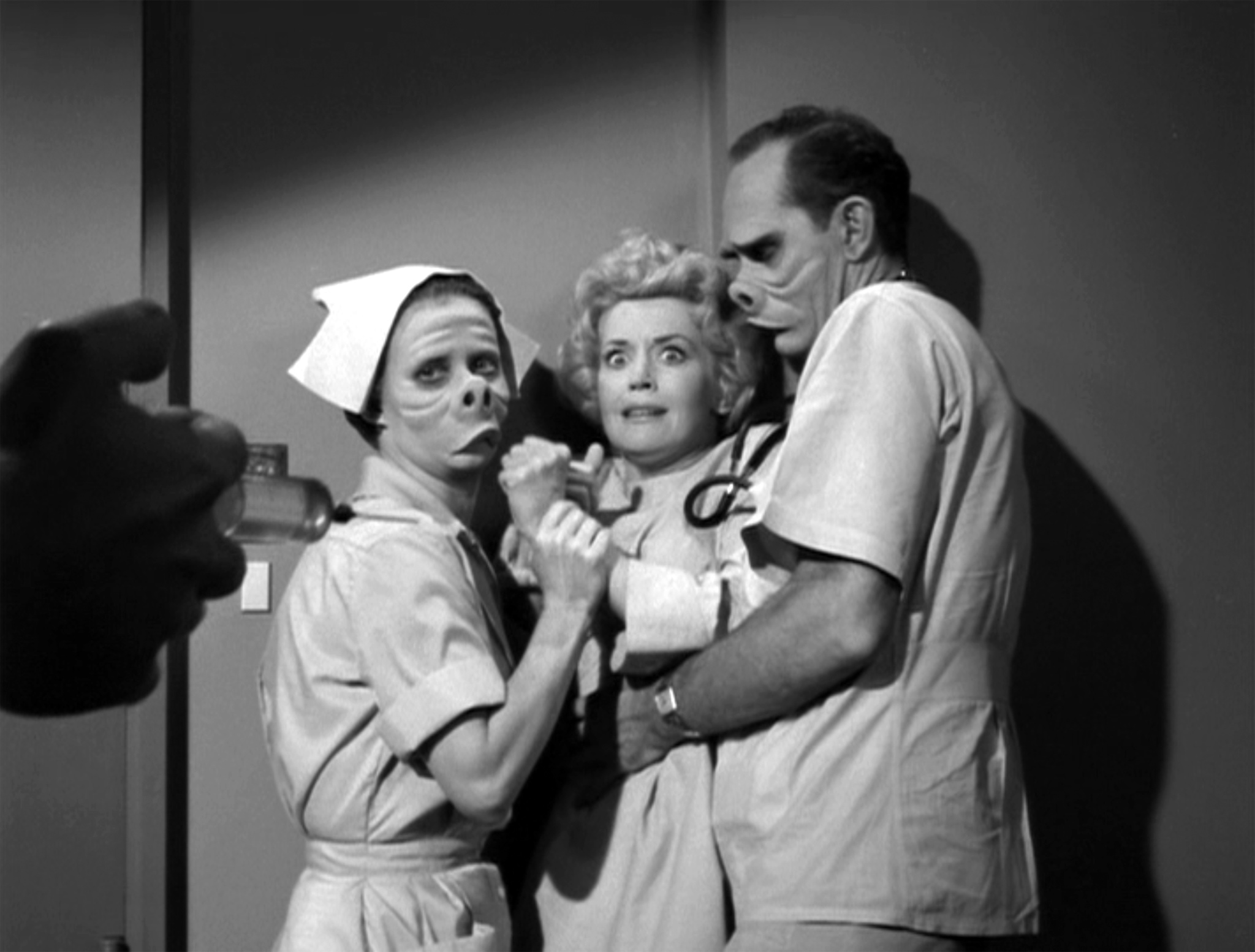The Beauty that is Eye of the Beholder
The purpose of art has been a long winded debate that has lasted generations. One of the more prominent theories, that has lasted since Plato’s lifetime, is that art’s purpose is to mimic reality. While there are a lot of loopholes to this theory, and more modern theories have been proposed, aspects of this theory still persist. While artists are still not fully sure about the purpose of art, many voices have been added into the pool. One of these voices is art critic Susan Sontag. The main point that Sontag made was how art nowadays has been made to be only about how it can be interpreted. This led to art being over-interpreted, and the face value of art is being dismissed. While interpretation can be very important to art, this should not be the end all be all. A perfect example of this would be the episode Eye of the Beholder from the Twilight Zone. This episode is the perfect example of how art can be just as impactful and meaningful without having a deep and embedded meaning that requires over-interpretation.
The first piece of evidence towards this is that Eye of the Beholder is an amazing piece of art based on its cinematic aspects alone. We can see this starting with the camera work. In this episode all of the faces of the characters are hidden until the very end of the episode where the big reveal happens. However, the way that the faces are hidden is the camera remains just away from each of the characters’ faces. We’ll have views over the doctor’s shoulder, or being just below the neck of a different character. Having the camera work this way adds a sense of suspense and curiosity into the episode. We’re right at the cusps of seeing a face, but not quite enough to see it. It reels you in so you keep watching for that end result of finally getting to see what everyone looks like. Another amazing piece of the episode is the music. The music does an amazing job at replacing the emotion we lose from not being able to see any of the actors’ faces. It also adds an additional eerie feeling to the overall mood of the episode. Sontag mentions in her article, “…it is still assumed that a work of art is its content”. The cinematic work in Eye of the Beholder is a key feature in conveying the meaning that it is trying to convey. A problem with over interpretation of art is that people forget to appreciate the hard work that goes into making the work. The pieces of cinema in the episode shows the true work and dedication that may have gone into making the episode.
Another feature about Eye of the Beholder that makes it meaningful is that over-analysis/interpretation is not needed to understand the meaning. The meaning of this episode is straightforward, or at the very least, doesn’t require a lot of analysis to understand. The title itself comes from the famous phrase “beauty is in the eye of the beholder”, which already gives the watchers a clue into what the episode could be about. What also makes the meaning quite obvious is how in the episode it’s revealed that this beautiful woman (at least, beautiful to our standards) is going through countless procedures to make herself “look better” to fit into a society of people with deformed pig faces. This is obviously a hint towards the subjectiveness of beauty, and how integrated plastic surgeries and feature alterations are in our society. It also hints towards how chaotic changing yourself may seem. Having a straightforward meaning is beneficial to this episode because “ by making works of art whose surface is so unified and clean, whose momentum is so rapid, whose address is so direct that the work can be…just what it is.” (Sontag). Eye of Beholder having such a straightforward meaning means that there will be less need to dive into over-analyzing the work. The time and effort that would have gone into analyzing and nit-picking the details can instead be redirected into appreciating the work and talent of the episode itself.

Eye of the Beholder is also a valuable piece of art because it can still make the reader feel something, without having a super deep or complicated meaning. Sontag mentioned, “real art has the capacity to make us nervous”. Eye of the Beholder is a wonderful example of this because on top of feeling nervous, the reader can feel so many other emotions from watching this episode. You feel the sadness from the desperation and despair that the main actress portrays. You feel the shock from the big reveal at the end. You feel the suspense that the music and camera work portrays. You may even feel relief at the end when the main actress gets her happy ending. Eye of the Beholder is a package of emotions and feelings that does an amazing job at helping the watcher feel…feelings. And isn’t that what art is meant to do?
The societal norm of creating art that is meant to be over-interpreted could hinder the act of appreciating art for what it is. It is important to appreciate art for how much work goes into it, for what we see in the moment. However, this does not mean that art with a meaning is a bad thing. It may also be beneficial to create art that has a meaning that is easier to understand, so that viewers can spend more time appreciating the work itself. If we do not go back to appreciating art for what it is, we will continue to have lines of art that makes the creation process all about the way it can be interpreted. This could also lead to art having less of a meaning to people, because the meaning is too hard to reach. To make art more about the content, I think artists should focus more on making art with straightforward meanings. Interpretation in art is not a bad thing, in fact it could be a helpful thing, but you also want people to appreciate how much work you put into your art. Creating more straightforward art could be the solution to this.
Works Cited
Sontag, Susan. “Against Interpretation”, Against Interpretation, 1966, pp. 1-10
Serling, Rod. “Eye of the Beholder”, The Twilight Zone, Season 2 Episode 6, 1960
